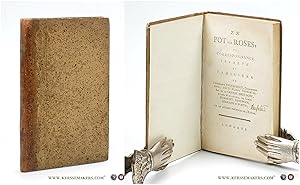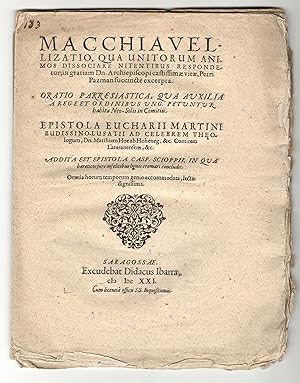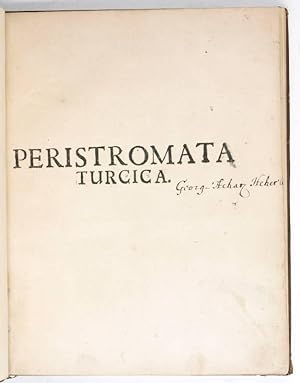false (8 Ergebnisse)
Produktart
- Alle Produktarten
- Bücher (8)
- Magazine & Zeitschriften
- Comics
- Noten
- Kunst, Grafik & Poster
- Fotografien
- Karten
-
Manuskripte &
Papierantiquitäten
Zustand
Einband
Weitere Eigenschaften
- Erstausgabe (2)
- Signiert (1)
- Schutzumschlag
- Angebotsfoto (6)
Land des Verkäufers
Verkäuferbewertung
-
Das große Familienbastelbuch
Verlag: False
ISBN 10: 3772451128ISBN 13: 9783772451126
Anbieter: Ammareal, Morangis, Frankreich
Buch
Zustand: Bon. Légères traces d'usure sur la couverture. Ammareal reverse jusqu'à 15% du prix net de cet article à des organisations caritatives. ENGLISH DESCRIPTION Book Condition: Used, Good. Slight signs of wear on the cover. Ammareal gives back up to 15% of this item's net price to charity organizations.
-
Laternen für Jungs aus Papier, Pappmaché und Windowcolor (Topp, Boys only)
Verlag: False, 2006
ISBN 10: 3772434959ISBN 13: 9783772434952
Anbieter: Versandantiquariat Felix Mücke, Grasellenbach - Hammelbach, Deutschland
Buch
Broschiert. Zustand: Akzeptabel. 31 Seiten; ehemaliges Büchereiexemplar, Artikel stammt aus Nichtraucherhaushalt! AJ8247 Sprache: Deutsch Gewicht in Gramm: 500.
-
The Last Maharajan
Verlag: FALSE BAY BOOKS, 2016
ISBN 10: 0989807835ISBN 13: 9780989807838
Anbieter: moluna, Greven, Deutschland
Buch
Zustand: New.
-
French Translation of the Tractatus Theologico-Politicus [AND] A Miscellany of Spinozana [BOUND FOR THE DUKE OF DEVONSHIRE IN 18TH-CENTURY FRENCH MOROCCO]
Verlag: [False publishers] / F. Foppens, [False locations] / Brussels, 1678
Anbieter: ERIC CHAIM KLINE, BOOKSELLER (ABAA ILAB), Santa Monica, CA, USA
Erstausgabe Signiert
Hardcover. Zustand: Fine. First French Edition / Later editions. Two works (the latter in five parts), in two volumes, the first published in 1678, the latter in 1731, duodecimo. [34], 531, [29, table], [1, fautes], [1, blank], 30 (remarques); [10], 158, 483, [2, table], [3 blank]pp. Uniformly bound in eighteenth-century French green morocco, gilt-tooled spines, a.e.g., marbled endleaves. A beautiful little set. First French translation (one of two nearly identical issues, the present copy with misprint 'PREEACE' in the headline at [asterisk]10v). Originally published in Latin anonymously in 1670, and reissued at least twice over the next four years, this celebrated work of early modern criticism and political philosophy by Benedictus de Spinoza (1632-1677) comprises a strong defence of secular government, and a systematic critique of revealed (biblical) religion. Immediately upon its publication the work was castigated and condemned throughout the Republic of Letters. Pierre Daniel Huet, for example, referred to the work in his Alnetanae quaestiones (1690) as "that horrible and sacrilegious book full of impiety, ignorance and madness." (J. Israel, Radical Enlightenment). While Huet was here content to merely vilify Spinoza, he nonetheless felt the need to first present a scholarly refutation in his Demonstratio Evangelica (1679). The final thirty pages comprise the "Remarques curieuses et necessaires pour l'intelligence de ce livre", a French translation of the notes Spinoza had penned in his own copy of the Tractatus. Curiously, these notes were not published in the original Latin until Christoph Gottlieb von Murr edited the Adnotationes ad Tractatum theologico politicum, ex autographo edidit, which was published at The Hague in 1802. On the evidence of the earliest biography of Spinoza, attributed to Jean Maximillien Lucas, it is assumed that the translator was the French refugee from Anjou, Gabriel de Saint-Glain. Arriving in the Netherlands as a Calvinist, after meeting Spinoza Saint-Glain became "one of his pupils and one of his greatest admirers" (Kingma-Offenberg). To hide the identity of the text, booksellers were offered a choice of three false titles: La clef de sanctuaire, par un sçavant homme de notre siècle (Leyde: Pierre Warnaer); Réflexions curieuses d'un esprit désintéressé sur les matières les plus importantes au salut, tant public que particulier (Cologne: Claude Emanuel); Traitté des ceremonies superstitieuses des Juifs tant anciens que modernes (Amsterdam; Jacob Smith), all dated 1678. Copies with all three titles present are relatively scarce. Complete with initial blank. Brunet V, 492. Barbier IV, 775. J. Kingma and A.K. Offenberg, "Bibliography of Spinoza's Works up to 1800" [in:] Studia Rosenthaliana, no. 11, pp.1-32, Y.4/Y.5 (the third title page is X.1). Linde, A. van der, Benedictus Spinoza (1871), p.4: 10-12. Weller, E. Falsche Druckorte vol. 2, 1678. I. French translation of Spinoza's Tractatus theologico-politicus by Gabriel de Saint-Glain, second issue printed in a clearer type, and with misprint 'PREEACE' at [asterisk]10v. All three false title pages are present: La clef du santuaire par un sçavant homme de nôtre siecle, A Leyde: Chez Pierre Warnaer, [1678]; Reflexions curieuses. sur le matieres plus importantes au salut, tant public que particulier, A Cologne: Chez Claude Emanuel, 1678; Traitté des ceremonies superstitieuses des Juifs tant anciens que modernes, A Amsterdam: Chez Jacob Smith, [1678]. Originally published in Latin in 1670, the present version is the first to contain an appendix of Spinoza's own notes (in French translation) which he had penned in the margins of an earlier Latin edition just months before his death. Kingma-Offenberg 16 (Y1). Van der Linde, 10-12; Wolf Spinoza Collection 373. Collation: I: [pi]3 (false titles), [asterisk]2-12 (blank [asterisk]1 precedes title; [asterisk]3-7 signed [asterisk]2-6), 2[asterisk]4, A-2A12, 2B8 (= 314 leaves). II. Bruxelles: F. Foppens, 1731. A remarkable collection of Spinozana edited by Abbé Nicolas Lenglet du Fresnoy: a life of Spinoza compiled chiefly from the biography (1706) by Jean Colerus; a preface followed by the Réfutation de Spinosa by Henri de Boulainvilliers; an extract from François Lami's Le nouvel athéisme (1696), along with the extract of François Fénelon's appended letter; a reprint of Isaac Orobio de Castro's Certamen philosophicum (1703). Bamberger 315. Van der Linde, 107-108. Collation: [pi]2, a-f12, g10, A-V12, X4 (= 328 leaves, blank X4). Provenance: from the Chatsworth library of Spencer Compton, VIII Duke of Devonshire, with his bookplate.
-
Le pot aux roses, ou Correspondance secrète et familière de l'honorable Thomas Boot (pseudonym), cordonnier royal, avec Sa Majesté George III, roi de la Grande-Bretagn, et ses ministres, les lords Stormont, Sandwich, Germaine et North; sur les affaires pre'sentes de l'Europe.
Verlag: Londres (false imprint: La Haye), No publisher, (1781)., 1781
Anbieter: Emile Kerssemakers ILAB, Heerlen, Niederlande
8vo (21,5x14 cm). Contemporary half leather, with label '664'on spine; covers with marbled paper. 214 pp. - Satyrical letters of sympathizers of the insurgents, Dutch and English, during the American Independant War. - Politics and government in Europe 1648-1789. - Old (owner's) name on title 'Dufalu'. - Good, spotless copy 350g.
-
Macchiavellizatio, qua unitorum animos dissociare nitentibus respondetur; in gratiam Dn. Archiepiscopi castissimae vitae, Petri Pazman succincté excerpta.
Verlag: Saragossae, Excudebat Didacus Ibarra. (False printing press. Not specified.), 1621
Anbieter: Abauj Antique Bookshop, Kistokaj, H, Ungarn
Buch
No Binding. Zustand: Very Good. [Peter Alvinczi (1570 - 1634)]: Macchiavellizatio, qua unitorum animos dissociare nitentibus respondetur; in gratiam Dn. Archiepiscopi castissimae vitae, Petri Pazman succincté excerpta. Oratio parresiastica, qua auxilia a rege et ordinibus Ung. Petuntur habita Neo-Solii in Comitiis. Epistola Eucharii Martini Budissino-Lusatii ad celebrem Theologum, Dn. Matthiam Hoe ab Hoheneg, &c. Comitem Lateranensem, &c. Addita est Epistola Casp. Scioppii, in qua haereticos jure infelicibus lignis cremari concludit. Omnia horum temporum genio accomodata, lectu dignissima. Saragossae, 1621. Excudebat Didacus Ibarra. 35 p. A perfect copy in crude condition, folded sheet by sheet. Unique rarity in this (original) condition. - An outstanding piece of political literature of the period. It is an interesting document of European and Hungarian domestic politics of the time. Péter Alvinczi (1570-1634) was a Hungarian Reformed ecclesiastical and political writer. He was an adviser to István Bocskay and later to Gábor Bethlen. His most important political work is the anonymously published 'Machiavellianism'. The dispute between Tamás Balásfy and Alvinci was sparked off in the spring of 1620 by the anonymous pamphlet "Secretissima instructio", whose author can be traced back to Péter Pázmány. The text appears as if its 37 points were written for King Frederick V of Bohemia by a loyal follower of his, well versed in military and political matters. Its ultimate aim was to stir up strife between Gábor Bethlen and his allies and to discredit him. Alvinczi responds to this in 26 (wrongly 27) points, stressing that the pamphlet was essentially a Machiavellian machination. Machiavellianism was answered by Balásfy with his Castigatio, and then again by Alvinczi with his Resultatio. Alvinczi's writings are distinguished by his broad education and his ability to argue on the basis of clear logic, which makes him superior to his opponents' works, and he refutes his opponent's claims with ease.The first edition of the book was published in 1620 without indicating the place and printer, in fact in Festus' workshop in Kassa. From a literary point of view, this edition is more special: it was undoubtedly printed abroad, in a printing house as yet undetermined by the literature. Here, the main text is accompanied by a few smaller works. Perhaps the most interesting of these is a letter from the late humanist Scioppius to Conrad Ritterhusius, in which he gives an eyewitness account of Giordano Bruno's death at the stake.
-
QUEEN MAB, A PHILOSOPHICAL POEM
Verlag: Printed & Sold by J. Baldwin [false imprint, actually printed in London], New York, 1821
Anbieter: Bartleby's Books, ABAA, Chevy Chase, MD, USA
Erstausgabe
First edition with an American imprint. 12mo in sixes (16 cm). (12), 181, (1, publisher's ad leaf) pp. Engraved title leaf on thicker paper. American Imprints 6784. Grannis 22. Wise Shelley Library, p. 92. OCLC: For a discussion of the publication of this unauthorized edition, see George T. Goodspeed's, "The 'first American' Queen Mab" in The Colophon, New Graphic Series 1 (1939). Ulbert Parsons Sachs bookplate on front pastedown; Sachs's major poetry collection was sold by Ritter-Hopson in 1932. Original drab boards (spine repaired). A little interior browning and soiling, but a very good, untrimmed copy.
-
Peristromata Turcica, sive dissertatio emblematica, praesentem Europae statum ingeniosis coloribus repraesentans.
Verlag: [Nürnberg, Wolfgang Endter] (ad 1 with a false colophon: Paris, Toussaint du Bray), 1641-1642., 1642
Anbieter: Antiquariat INLIBRIS Gilhofer Nfg. GmbH, Vienna, A, Österreich
(2) [Harsdörffer, Georg Philipp]. Germania deplorata, sive relatio, qua pragmatica momenta belli pacisque expenduntur. (3) [Milag, Martin]. Aulaea Romana, contra Peristromata Turcica expansa: sive dissertatio emblematica, concordiae Christianae omen repraesentans. (4) [Anonymous French critic of Cardinal Richelieu]. Gallia deplorata, sive relatio, de luctuoso bello, quod rex Christianissimus contra vicinos populos molitur. 4 editions published together in 1 volume. 4to. With 2 engraved title-plates plus 12 full-page engraved emblematic illustrations, all on integral leaves, each with a small plate nested in a larger plate (7 in the Peristromata with a varying plate black and the same outer plate of a Persian carpet in orange). Gold-tooled light brown calf (ca. 1820?) by Charles Murton in London. Rare first and only Latin editions (probably the first and only early editions in any language) of four closely related polemical pamphlets on European policy toward the Ottoman Empire. The publication was instigated by the prominent Nuremberg poet and jurist Georg Philipp Harsdörffer (1607-58), who somehow found access to the French manuscripts of the pro-Richelieu "Peristromata Turcica" (Turkish carpets), and the anti-Richelieu "Gallia deplorata", translated them into Latin, edited them for publication and added what is believed to be his own anti-French Latin rebuttal of the former, "Germania deplorata". On 26 November 1641 he sent all three to the Calvinist Prince Ludwig of Anhalt-Köthen, founding president of the Fruchtbringende Gesellschaft in Weimar, who found the "Peristromata Turcica" shocking and dangerous, not only for its content but also because its remarkable and "seductive" graphic form. At a spring 1642 meeting of the society Ludwig initiated the writing and production of an emblematic rebuttal, the "Aulaea Romana" (Roman tapestries). Besides the political importance of these pamphlets as records of differing European attitudes toward the Ottoman Empire, they are remarkable graphic and typographic artefacts, early examples of colour printing and important emblemata. In 1536 Francois I had formed an alliance with the Ottoman Emperor Suleiman the Magnificent, and for a century Franco-Ottoman relations swung between extremes. Around 1626 Cardinal Richelieu began to encourage noblemen to strengthen France's economy by expanding its maritime trade in the Middle East, Near East and beyond. But with its great maritime power, the Ottoman Empire was not only a potentially valuable trading partner but also a fierce competitor and even a military threat to Europe's trade in those regions. Richelieu therefore attempted to form a Catholic union with the Holy Roman Empire and others to fight against the Ottomans. With owner's inscription of the lawyer and diplomat Georg Achatz Heher (1601-67) and bookplate of Robert Hoe (1839-1909), one of the greatest book collectors of all time. With the last quires (E-H) of the "Aulaea Romana" misbound following the last quire (G) of Gallia. A small marginal worm hole in the first work and the first leaves of the second, and an occasional small marginal chip or tear, but still in good condition. The binding with cracks in the hinges and some wear at the extremities, but otherwise good. Although these four editions were clearly designed to be published together, only about a dozen complete sets are known to survive, nearly all in Germany, Austria and Poland. - Faber de Faur 497-500. Praz 448f. M. Reinhart, "Georg Philipp Harsdörffer and the Emblematic Pamphlets of 1641-42", in: Emblemata XX (2013), pp. 313-376 & XXI (2014), pp. 277-375. Stijnman & Savage, p. 46 (ad 1). Not in Atabey or Blackmer.





![Bild des Verkäufers für French Translation of the Tractatus Theologico-Politicus [AND] A Miscellany of Spinozana [BOUND FOR THE DUKE OF DEVONSHIRE IN 18TH-CENTURY FRENCH MOROCCO] zum Verkauf von ERIC CHAIM KLINE, BOOKSELLER (ABAA ILAB)](https://pictures.abebooks.com/inventory/md/md31186269688.jpg)



